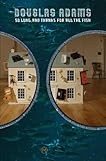Nobody enjoys the constant sneezing, coughing and watery eyes that accompany a dust mite allergy. Besides stuffiness and discomfort allergy symptoms can be disruptive during a work day and deprive you of much needed sleep night after night and day after day.
But allergies don’t have to be miserable and ruin your life!
Regardless if your symptoms are mild, moderate or even severe there are things you can do at home to stop the vicious cycle of dust allergies and start living symptom free. All it takes is an understanding of what a dust allergy is and ultimately what a dust mite is, how it affects your body and effective methods for eliminating the allergen from your home.
What Is a Dust Mite?
So what are dust mites? They are tiny microscopic creatures that measure about .01 inches, which is the same as about a thousandth of a millimeter requiring a microscope to be able to see them. They are a member of the arachnid class because they are joint-legged invertebrate animals.
They are closest to spiders and tics but they do not actually bite you or feed on your directly. Instead they feed on the dead skin cells that flake off your body on a continual basis. Dust mites start out as an egg and then move onto the larvae stage with 6 legs. The next stage is nymph and finally adult where they develop 8 legs.
From egg to adult is roughly 3 to 4 weeks and can continue to live another 1 to 3 months depending on the living conditions. Under ideal conditions a single female can produce anywhere from 50 to 80 eggs in her lifetime.
What are Ideal Living Conditions?
Dust mites flourish in a warm, humid and dark environment that provides a ready source of food. In your home their preferred living space is actually your bed, where it remains dark, warm and readily plentiful with a food supply.
What Is a Dust Mite Allergy?
Dust mite allergies can be defined as an overreaction by your immune system to the presence of dust mite droppings and decaying body parts. This “overreaction” leads to the classic respiratory symptoms sufferers know all too well.
How Do Dust Mite Allergies Affect You?
As we breathe normally we inhale these tiny microscopic particles that have become airborne through normal household activities like cleaning, rustling the sheets and blankets on your bed and dusting. Once inhaled these particles gain access to your bloodstream where they travel throughout your body and populate in a variety of locations.
The immune system locates these particles and responds by over producing IgE antibodies. These antibodies locate mass cells or cells that contain histamine within the blood to attach to. On repeated exposure more antibodies are produced and the mast cells become overloaded and burst, releasing histamine into the bloodstream. As the histamine travels through your body varying symptoms begin to appear.
How to Effectively Eliminate Allergy Symptoms
If you want to effectively eliminate symptoms it is necessary to eliminate the allergen. Anything else is just a temporary cover up until the next overload. The good news is eliminating dust mite allergens is easier than you might think.
1) Purchase allergy encasements. Dust mites live in your bed and feed on skin tissue that has flaked away while sleeping. This makes it rather obvious how encasing your mattresses and pillows can eliminate the allergen at its source. Do some research and be sure the encasements you select are designed to trap particles as small as 200 microns and you’ll be set to effectively trap dust mites and their waste.
2) Invest in a quality vacuum designed to trap particles of the smallest microns. It doesn’t necessarily have to be a HEPA filter vacuum but it does need to be designed with a powerful suction that has been proven to trap particles instead of letting them slip through the bag surface and back into the air you are breathing.
3) Purchase an air purifier with proven effectiveness at eliminating particles as small as 200 microns and place it in your bedroom. You can purchase a whole house purifier if you want to but you will still want a separate unit for your room.
4) Finally, clean thoroughly and clean often. By keeping dust to a minimum on hard surfaces you will prevent allergen particles from becoming airborne where they wait for you to inhale!
Nobody enjoys living with bothersome allergy symptoms. The good news is you don’t have to! Just take a moment to understand the dust mite, what an allergy is and how to beat it and you’ll be breathing fresh air and enjoying symptom free days in no time.
Mikki Hogan is a proud wife and mother living in North Carolina with her family. Soon after learning she was suffering from an allergy from dust she set her mind to finding a way to beat her symptoms by beating the disease. Step one was answering the question, “what are dust mites” in as much detail as possible. The answer led her to practical solutions for relief that she gladly shares here today.

























































No comments:
Post a Comment
Please leave us some love...and have yourself a groovy day~!! Peaces...xoxo